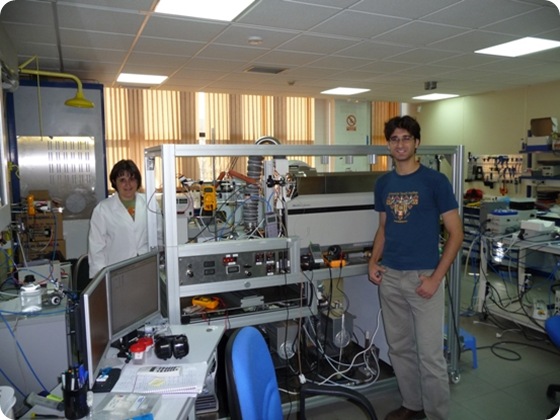Jul 21 2009
A team of researchers from the Yale University (United States) and a Spanish company have developed a system to detect the vapours emitted by human skin in real time. The scientists think that these substances, essentially made up of fatty acids, are what attract mosquitoes and enable dogs to identify their owners.
"The spectrum of the vapours emitted by human skin is dominated by fatty acids. These substances are not very volatile, but we have developed an 'electronic nose' able to detect them", Juan Fernández de la Mora, of the Department of Mechanical Engineering at Yale University (United Status) and co-author of a study recently published in the Journal of the American Society for Mass Spectrometry, tells SINC.
The system, created at the Boecillo Technology Park in Valladolid, works by ionising the vapours with an electrospray (a cloud of electrically-charged drops), and later analysing these using mass spectrometry. This technique can be used to identify many of the vapour compounds emitted by a hand, for example.
"The great novelty of this study is that, despite the almost non-existent volatility of fatty acids, which have chains of up to 18 carbon atoms, the electronic nose is so sensitive that it can detect them instantaneously", says Fernández de la Mora. The results show that the volatile compounds given off by the skin are primarily fatty acids, although there are also others such as lactic acid and pyruvic acid.
The researcher stresses that the great chemical wealth of fatty acids, made up of hundreds of different molecules, "is well known, and seems to prove the hypothesis that these are the key substances that enable dogs to identify people". The enormous range of vapours emitted by human skin and breath may not only enable dogs to recognise their owners, but also help mosquitoes to locate their hosts, according to several studies.
World record for detecting explosives

Aside from identifying people from their skin vapours, another of the important applications of the new system is that it is able to detect tiny amounts of explosives. The system can "smell" levels below a few parts per trillion, and has been able to set a world sensitivity record at "2x10-14 atmospheres of partial pressure of TNT (the explosive trinitrotoluene)".
The "father" of ionisation using the mass spectrometry electrospray is Professor John B. Fenn, who is currently a researcher at the University of Virginia (United States), and in 2002 won the Nobel Prize in Chemistry for using this technique in the analysis of proteins.